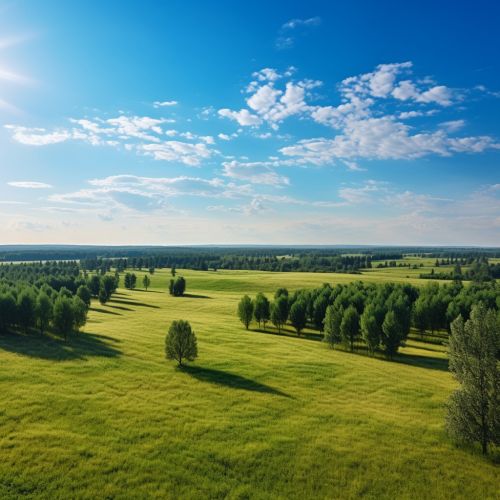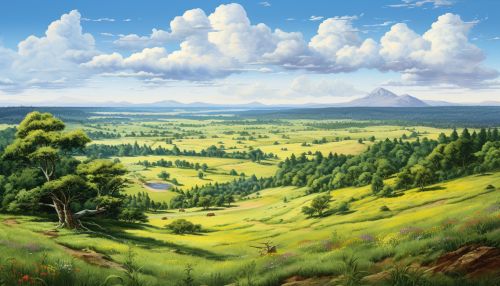Belarus
Geography
Belarus, officially known as the Republic of Belarus, is a landlocked country in Eastern Europe. It is bordered by Russia to the east and northeast, Ukraine to the south, Poland to the west, and Lithuania and Latvia to the northwest. Covering an area of 207,600 square kilometers, it is the 13th largest country in Europe and the 84th largest in the world.


The country's landscape is characterized by flat lowlands separated by hilly uplands. The highest point is Dzyarzhynskaya Hara at 345 meters above sea level. Belarus has a high proportion of forested land, with about 40% of the country covered by forests. The largest forest, the Belavezhskaya Pushcha National Park, is a UNESCO World Heritage Site and home to the European bison, the country's national animal.
Belarus has more than 20,000 rivers and streams, with the Dnieper River being the largest. The country also has over 10,000 lakes, the largest of which is Lake Narach.
History
The history of Belarus can be traced back to the Stone Age, with the first known settlements dating back to 100,000-35,000 BC. The region that is now Belarus was first settled by Slavic tribes in the 6th century AD. In the 9th century, these tribes formed the Kievan Rus', a federation of Slavic states. The Mongol invasion in the 13th century led to the collapse of Kievan Rus' and the incorporation of Belarus into the Grand Duchy of Lithuania.
In the 14th century, the Grand Duchy of Lithuania and the Kingdom of Poland entered into a union, forming the Polish-Lithuanian Commonwealth. The Commonwealth was a major European power, but it was partitioned in the late 18th century by Russia, Prussia, and Austria. As a result, most of Belarus became part of the Russian Empire.
The 20th century was a period of turmoil for Belarus, marked by World War I, the Russian Revolution, the Polish-Soviet War, and World War II. In 1991, following the dissolution of the Soviet Union, Belarus declared independence.
Politics
Belarus is a presidential republic, with the President serving as the head of state and the Prime Minister as the head of government. The President is elected by popular vote for a five-year term. The country's legislative branch is the bicameral National Assembly, consisting of the House of Representatives and the Council of the Republic.
Belarus has been criticized for its lack of democratic freedoms and human rights abuses. The country's political system has been described as authoritarian, with President Alexander Lukashenko in power since 1994.
Economy
Belarus has a mixed economy with a large public sector and substantial foreign trade. The country's main industries include metal-cutting machine tools, tractors, trucks, earthmovers, motorcycles, televisions, chemical fibers, fertilizer, textiles, radios, refrigerators, and synthetic fibers.
The country is heavily dependent on Russia for its energy supplies and has been affected by economic sanctions due to its political situation. Despite these challenges, Belarus has maintained a relatively high standard of living compared to other former Soviet republics.
Culture
Belarusian culture is a mix of influences from its Slavic heritage, Polish and Lithuanian influences, and Russian and Soviet influences. The country's traditional music, dances, and cuisine reflect these influences.
The Belarusian language, along with Russian, is one of the two official languages of the country. However, Russian is more widely spoken in everyday life.
Belarus has a rich literary tradition, with notable authors including Nobel laureate Svetlana Alexievich. The country also has a vibrant theater scene, with the Belarusian State Academy of Arts being one of the leading theater schools in Eastern Europe.
